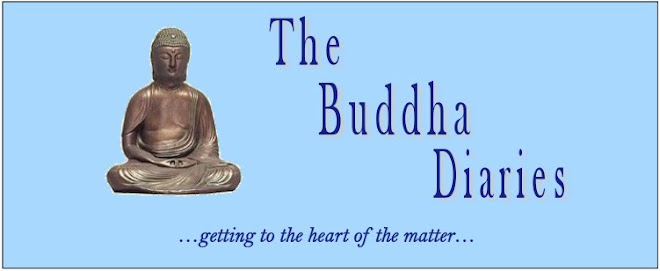I have been reading a review copy of From Suffering to Peace: The True Promise of Mindfulness by Michael Coleman, a long-time teacher of Buddhist meditation practice who himself spent many years
in training with teachers in a variety of traditions and a host of different countries. That he writes with fluency, conviction and ease about his subject is a tribute to the breadth of his knowledge and experience.
There is by now an immense field of literature about mindfulness, some of it popular, some scholarly, some laic, some specific to the practice of religion. And mindfulness has become something of a cultural phenomenon, the in thing, practiced in one form or another everywhere from kindergarten to college campus, from prison to corporate boardroom. There's good reason to be happy that the 2,500 year-old teachings of the Buddha are reaching the ears of so many in a world that needs them more than ever before--a world in which suffering seems so widespread, so endemic to a contemporary environment in which despair abounds.
There is also reason for concern, a risk that the profundity and subtleties of Buddhist thought can easily drift off into a kind of bland New-Ageism that offers superficial comfort but no real path to the true happiness that the Buddha promises as the outcome of a rigorous practice of his principles. I think it is in part this danger that Coleman seeks to address, because his book is studious in avoiding the clichés and is, instead, a truly thorough and comprehensive introduction to the practice. It offers not only a practical and reliable manual for newcomers; it also serves as a useful refresher course for one who has been at it for a good number of years. I'll confess I started out thinking I knew it all, and was gradually reminded, gently, page by page, that we are all beginners.
While Coleman does not make light of the challenges of a meditation practice, his explains it all in readable, lucid prose, with ample illustrations from his own life experience and that of others he has learned from or taught along the way. Each chapter is followed with an easy-to-follow set of instructions for a practice specific to its theme, making it possible for the reader to realize a complex teaching in actual, lived experience--a teaching, say, about the ways in which we fabricate an illusory sense of "self"--that might otherwise seem merely theoretical and distant. Following the guidance along this path, the reader is led ever deeper into the compassionate heart of Buddhist practice, the exercise of generosity and kindness toward oneself and every other being.
A country boy at heart who has too long been a city-dweller, I found myself responding with particular resonance to Coleman's constant return to nature as a source of both inspiration and awe, reminding us of the infinitesimal place we humans occupy in the greater universe. As one who offers frequent silent wilderness retreats, the author shares his passion for the natural world and the sense of humility we inevitably experience in its context. In its grandeur as well as in its loveliest detail, it invites us to open ourselves to that heightened, undistracted, fully present sense of awareness in the moment--the only place in which we humans are able to find true happiness in the release from suffering of which he writes.
As the Buddha taught, there is a path from suffering to peace. Coleman invites us skillfully to join him on it.
Monday, June 17, 2019
Subscribe to:
Post Comments (Atom)








No comments:
Post a Comment